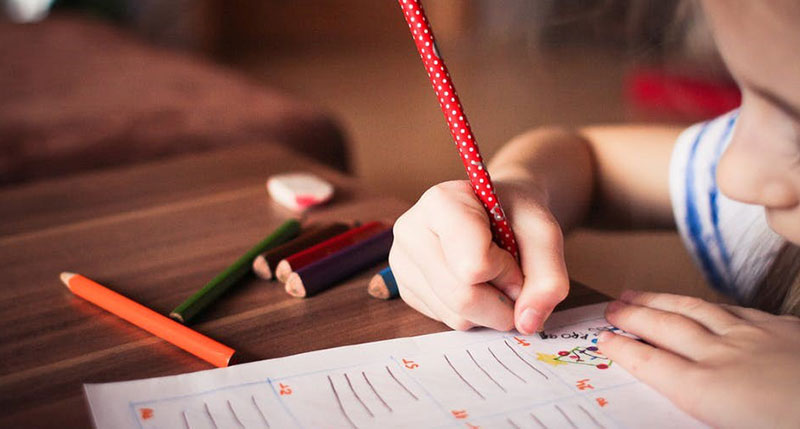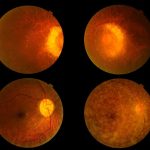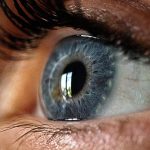Whether your child is back in the classroom this year or learning virtually, you want your student to learn in the most effective way possible. Did you know that there’s one key factor in learning that is sometimes overlooked? That factor is how well the eyes and the brain work together to maximize your student’s ability to learn.
Vision has a significant impact on learning. Studies show that 80% of what we learn comes to us through our visual system. That’s why it’s critical to make sure your child’s entire visual system works at its best.
If my student has 20/20 vision, can she still have a visual system problem?
Yes. While it’s vital to have 20/20 vision either naturally or through corrective lenses, visual acuity is just one of many vision elements that affect learning.
What if your student’s eyes can’t change focus quickly enough when looking up at the teacher and then back down to where he or she is taking notes? Or, imagine if when reading, your child’s eyes aren’t teaming well, so the text appears doubled or blurry, preventing her from understanding the words on the page. Or what if the words seemed to disappear as she’s reading a line of text?
In each of these cases, the student experiencing the vision problem may have 20/20 visual acuity. Yet, with the focusing and eye teaming challenges mentioned above, the visual system isn’t functioning well enough to promote quality learning.
Is a school vision screening enough to rule out visual problems in learning?
No. Even if your student passes a school vision screening, they can still have a significant functional vision issue preventing them from learning at their best. A student’s visual system is often a significant part of any learning dysfunction.
What exactly does a visual system problem impact during a student’s school career? Following are 10 examples of how learning and vision are closely linked:
- When your child first learns to read, vision challenges can prevent them from developing basic reading skills.
- When students are reading for comprehension, double vision or blurry vision can prevent them from being able to read for an extended period. This lowers their reading comprehension significantly.
- When a child’s vision is blurred or double, they can have difficulty seeing signs in math such as decimals or addition, multiplication or division symbols.
- Students with reduced visual skills have trouble organizing their letters and numbers on the page—making it difficult to line up the numbers correctly to complete math problems.
- When kids don’t see or align numbers correctly in math problems, it can lead to incorrect calculations. They may need to use their fingers to count, or count aloud, which lowers their ability to score well on timed tests.
- If your child is a strong “mathlete” but needs to read a story problem in math class and figure out the answer from the context, vision problems can prevent him from doing so correctly.
- Your child’s handwriting may suffer if she has vision problems. Our vision guides our hands as we write. A poorly functioning vision system can show up as challenges in neat and organized handwriting.
- If your student has challenges with visual recall—the ability to create a visual image in the mind based on past experiences—they may also suffer from spelling challenges, since spelling is based on recalling the letters in a word.
- Kids with functional vision challenges can easily confuse letters with similar shapes such as b, d, p and q and may write or read them backward, hindering their reading comprehension.
- Your student’s writing can suffer if they don’t have the visualization skills to organize and rework a paragraph or longer composition in their heads, resulting in poor writing skills.
Sadly, many students and adults never realize that their challenges in the classroom or even in the workplace are not related to intelligence or effort—but are due to their visual system and how it processes information. Such problems can be due to focusing, tracking, perceptual skills and eye teaming, which are all functional vision issues.
If your student doesn’t understand why he or she isn’t succeeding in the classroom, it can negatively affect behavior and self-esteem. It can even lead to continued challenges in the work setting as an adult. Children and adults with functional vision problems often feel frustrated, restless, anxious and struggle to concentrate. This can result in them being labeled as “problem learners.” Don’t settle for that label—if a vision challenge is at the center of your child’s issue, we can help!
Bring your child to the optometrist for a comprehensive annual eye exam. We will test his or her functional vision to make sure they are capable of succeeding in a learning setting.
If your child has a functional vision issue, prompt diagnosis and treatment can improve their ability to learn. When a vision issue is identified, we can help to correct it. This will help your student improve their ability to focus, improve their reading comprehension and even sports performance.
If your student hasn’t had a comprehensive eye exam in the past year, call us today to make an appointment with your optometrist. We’ll evaluate his or her entire visual system to ensure they have the visual abilities needed to succeed this school year!






